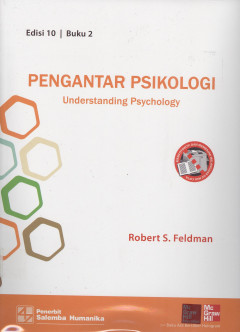Filter by

PHP tutorial book for beginner
Daftar isi: 1. Dasar PHP 2. Definisi dan fungsi PHP 3. Install wampserver dan praktik PHP 4. Variabbel dan penulisan di PHP 5. Konstanta dan penulisan di PHP 6. Tipe data PHP 7. Data integer dan penulisan dalam PHP 8. Data float dan penulisan dalam PHP 9. Data string dan penulisan dalam PHP 10. Data array dan penulisan dalam PHP 11. Data Boolean dan penulisan dalam PHP 12. Operator …
- Edition
- -
- ISBN/ISSN
- 9786022880813
- Collation
- 256 hlm.: ilus.; 20 cm.
- Series Title
- -
- Call Number
- 005.262 MUN p

Java teori, algoritma, dan aplikasi
Bab 1 Mengenal JAVA. 1 1.1 Introduksi 1 1.2 Program Java Pertama. 2 1.3 Memodifikasi Program Anda. 6 1.4 Menampilkan Teks dengan printf 9 1.5 Aplikasi Lain: Menjumlahkan Integer 10 1.6 Konsep Memor 17 1.7 Aritmatika 19 1.8 Pembuatan Keputusan: Operator Ekualitas dan Relasional 24 Kesimpulan 29 Latihan 31 Bab 2 Mengenal Kelas, Objek, Metode, dan String 33 1.1 Introduksi 33 2.2 Mende…
- Edition
- -
- ISBN/ISSN
- -
- Collation
- -
- Series Title
- -
- Call Number
- 005.262 SIA j

Visual Basic.net Membuat Aplikasi Database dan Program Kreatif
Bab 1 Pendahuluan 1 1.1 Konsep Pemrograman 1 1.2 Pemmrograman dari Masa ke Masa. 3 1.3 Sejarah VB .NET. 3 1.4 Kelebihan Visual Basic .NET 7 1.5 Visual Basic .Net VS Visual Studio .NET 8 1.6 Studi Kasus Pada Buku Ini 10 1.7 Selayang Pandang Isi Buku Ini 11 Bab 2 Pengenalan Visual Basic .NET 19 2.1 Cara Instalasi dan Uninstall Visual Basic .NET 20 2.1.1 Instalasi Visual Basic 2010 20 2…
- Edition
- -
- ISBN/ISSN
- -
- Collation
- -
- Series Title
- -
- Call Number
- 005.262 PRI v

Javascript & Jquery interactive front-end web development
null
- Edition
- first
- ISBN/ISSN
- 9781118531648
- Collation
- iv,622 hal. ;illus. ; 23,5cm
- Series Title
- null
- Call Number
- 005.262 DUC j
Assitive technologies and computer accsess for motor disabilities
null
- Edition
- first
- ISBN/ISSN
- 9781466644380
- Collation
- x,415hal.;ilus.;29cm
- Series Title
- the Advances in medical technologies and clinical practice book series ATMCP
- Call Number
- 617.03 KOU a

Pengantar psikologi = Understanding psychology
Catatan: terdapat indeks.
- Edition
- Edisi 10 - Buku 2
- ISBN/ISSN
- 9786028555586
- Collation
- 546 hlm.; ilus.; 28 cm
- Series Title
- --
- Call Number
- 150 FEL p

Sehat dan ceria di usia senja
null
- Edition
- null
- ISBN/ISSN
- 9795189441
- Collation
- ix, 241 hlm; ilus; 20 cm
- Series Title
- Buku 2
- Call Number
- 362.6 RON s

Guide to network security
terdapat daftar isi dan indeks
- Edition
- International Edition
- ISBN/ISSN
- 9781133279075
- Collation
- xxii+554 hlm.: ilus.; 23 cm
- Series Title
- --
- Call Number
- 005.8 WHI g

Interaksi Arduino dan LabVIEW
Buku ini mengajak pembaca untuk belajar Arduino dan LabVIEW, dan interaksi antara keduanya, melalui praktik yang murah dan sederhana. Mengapa Arduino? Karena Arduino adalah board mikrokontroler yang paling populer saat ini, karena murah, fleksibel dan open source. Mengapa LabVIEW? Karena LabVIEW adalah software instrumentasi dan kontrol dengan standar industri yang andal dan mudah digunakan. Na…
- Edition
- null
- ISBN/ISSN
- 978602002941
- Collation
- xiii, 329 hlm.; ilus.; 21 cm. + 1 CD
- Series Title
- --
- Call Number
- 629.8 DIA i

Data Structures and Algorithm Analysis in C++
Contents
Chapter 1 Introduction
1.1. What's the Book About?
1.2. Mathematics Review
1.2.1. Exponents
1.2.2. Logarithms
1.2.3. Series
1.2.4. Modular Arithmetic
1.2.5. The P Word
1.3. A Brief Introduction to Recursion
1.4. C++ Classes
1.4.1. Basic class Syntax
1.4.2. Extra Constructor Syntax and Accessors
1.4.3. Separation of Int…
- Edition
- Third Edition
- ISBN/ISSN
- 9780321397331
- Collation
- xviii, 586 hlm.; ilus.; 23 cm
- Series Title
- --
- Call Number
- 005.262 WEI d
 Computer Science, Information & General Works
Computer Science, Information & General Works  Philosophy & Psychology
Philosophy & Psychology  Religion
Religion  Social Sciences
Social Sciences  Language
Language  Pure Science
Pure Science  Applied Sciences
Applied Sciences  Art & Recreation
Art & Recreation  Literature
Literature  History & Geography
History & Geography